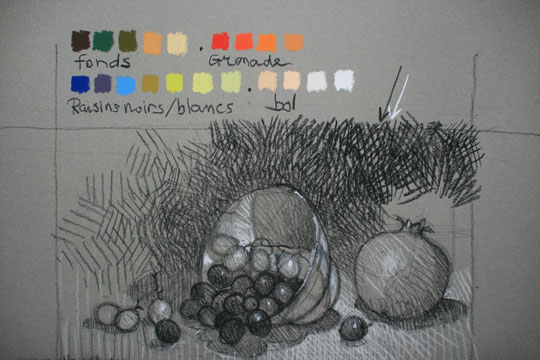A still life is a composition of live objects! While the direction of the lines or paint brush strokes makes handling volumes easier, your perfect mastery of color is what gives them realistic contours.
What you need to know:
- Objects, even monochromatic ones, display a broad palette of shades under the effect of light: a simple tomato calls for oranges, pinks and even browns.
- Only richly subtle shading will bring out all the contours.
- Lights and shadows are developed through tones of the dominant color.


